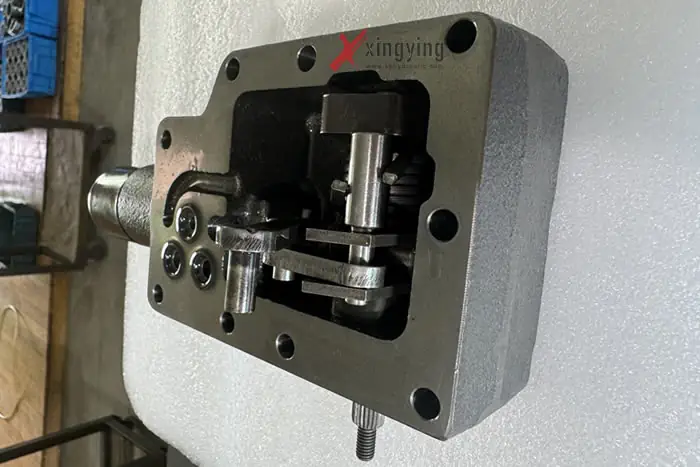Maximizing Hydraulic Valve Lifespan: A User's Guide

Hydraulic valves are the silent workhorses of Hydraulic Systems, controlling fluid flow and pressure with unwavering precision.
They play a critical role in diverse applications, from construction machinery to industrial robots.
However, even the most robust hydraulic Valve succumbs to wear and tear over time if not used and maintained properly.
This article delves into the user's responsibility in extending valve life, explores how pressure-flow characteristics impact performance,
and offers additional insights for maximizing valve longevity.
Beyond Quality: User Responsibility for Long-Lasting Valves
While valve quality is undoubtedly important, user actions significantly influence lifespan. Improper operation can inflict severe damage. Here's how users can promote valve longevity:
Matching the Valve to the Task: Selecting the right valve for the job is paramount. Consider factors like flow rate, operating pressure, fluid type, and temperature. An improperly sized valve experiences excessive stress, leading to premature failure.
Flawless Installation: Following manufacturer instructions during installation is crucial. Pay close attention to torque specifications and proper alignment. Overtightening or misalignment can damage the valve body or internal components.
Maintaining Fluid Cleanliness: Contaminants in hydraulic fluid act like microscopic sandpaper, accelerating wear and tear. Implement a robust filtration system to remove impurities. Regularly monitor fluid cleanliness and replace filter elements as per manufacturer recommendations.
Respecting Valve Limits: Exceeding the specified pressure or flow rate limits subjects the valve to undue stress. Ensure the valve operates within its rated capacity to avoid premature wear and damage.
Regular Maintenance: Preventive maintenance is key to preventing valve malfunctions and extending service life. Establish a schedule for periodic inspection, Cleaning, and lubrication of valves. Follow the manufacturer's recommended procedures and use appropriate lubricants.
Monitoring Valve Performance: Be vigilant for signs of abnormal valve operation such as unusual noises, erratic flow control, or leaks. Promptly address these issues to prevent further damage and potential system failures.
Pressure-Flow Characteristics: A Window into Valve Performance
Pressure-flow characteristics refer to the relationship between a hydraulic valve's pressure drop and its flow rate. Analyzing these characteristics provides valuable insights into valve performance:
Lower Pressure Drop at Rated Flow: Generally, valves with a smaller pressure drop at their rated flow are considered superior. This signifies greater efficiency with minimal energy loss.
Higher Flow at Same Pressure Drop: Within the same pressure drop, valves generating a higher flow rate are considered more advantageous. This translates to increased system capacity.
By comparing pressure-flow characteristics, users can make initial assessments of different valve designs. A valve displaying a smaller pressure drop under the same flow rate, or offering a higher flow rate under the same pressure difference, is likely to perform better.
Beyond User Responsibility: Additional Considerations for Valve Longevity
While user actions are vital, several other factors influence valve lifespan:
Choosing High-Quality Valves: Opting for valves from reputable manufacturers ensures superior materials and rigorous quality control processes, leading to longer service life and enhanced reliability.
Seeking Professional Help: For complex Repairs or troubleshooting issues, consulting qualified hydraulic technicians is recommended. Their expertise and specialized tools allow for accurate diagnosis and repairs, preventing further damage and optimizing performance.
Conclusion: A Collaborative Approach for Peak Performance
Maximizing hydraulic valve lifespan requires a collaborative effort. Users play a central role in proper operation and maintenance, while valve quality, pressure-flow characteristics, and professional expertise all contribute to achieving peak performance. By understanding these factors and implementing the recommended practices, users can ensure their hydraulic valves operate smoothly and efficiently for years to come.
Why Choose XingYing Hydraulic as Your Supplier?
1.Direct from Manufacturer: Benefit from competitive pricing on top-quality hydraulic products, sourced directly from our factory in China.
2.Custom Solutions: Our expertise allows us to tailor hydraulic components to your precise requirements, ensuring optimal performance.
3.Reliable Supply: Count on us as your trusted supplier for consistent quality and timely delivery, backed by our reputation in the industry.